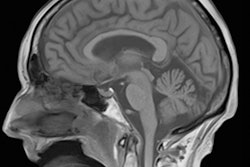Researchers from the Medical University of Vienna in Austria have used neuroimaging techniques to uncover important biological differences in the brains of men and women, as well as those who identify as transsexual.
After performing MRI on transsexual subjects receiving hormonal treatment and on control subjects, the researchers found sex hormones had a significant impact on brain connections and functions.
"For clinical research, this means we may get better insights into which hormonal dysfunctions may be linked to anxiety disorders and why women suffer from such disorders two to three times more often than men," principal investigator Dr. Rupert Lanzenberger, PhD, said in a statement. "The more knowledge we have about gender differences, the better medical science will be able to target therapeutic measures precisely, and the better the advances in so-called personalized medicine will be."
In an attempt to explore biological factors in mental illnesses, the researchers studied transsexual subjects with MRI to observe what happens in the brain when opposite-sex hormones are administered over a prolonged period in order to achieve opposite-sex hormonal blood levels. They also imaged control subjects.
Over the five-year study, the team found the hormones had an effect on language processing, risk-taking behavior, spatial cognition, impulsiveness, and structural brain connections. They also determined that transgender individuals had a brain structure with levels falling in the mid-range between the two sexes.
For example, an increase in blood testosterone levels resulted in a decrease in the volume of two brain regions that are of central importance for language processing and it also changed their connections, according to the group.
"This suggests the impact of testosterone on language processing occurs via the influence it has on the structure of gray and white matter in the corresponding brain region," Lanzenberger said. "We assume that some of the difference in white matter we found may emerge very early on, perhaps in the womb or before puberty. That would make it a type of biological information, a marker for gender identity."
The researchers believe the knowledge that brain connections and functions can change as a result of hormone administration even in adulthood may be important, such as when brain neuroplasticity is reduced in certain situations, for instance as presumed in depression. Using PET imaging, the group also found that testosterone significantly increased serotonin transporter density.
In ongoing investigations, the Vienna researchers said they have recorded a large volume of data on pain sensitivity, the sense of smell, behavior changes, and quality of life in order to correlate them with the brain scans. The goal is ultimately gain a better understanding of gender differences, according to the group.
The research was supported by the Austria Science Fund FWF.



















